American Small Arms on the Day of Infamy
December 7th, 2021
9 minute read
Eighty years ago, America was enjoying its last summer of peace before a second world war descended upon it, born with the sneak attack by Japan on the American naval base at Pearl Harbor.
Even though much of Europe had been fighting in earnest since September 1939, the United States at that point remained neutral. Germany split Poland with the Soviet Union and then conquered Norway, Denmark, Holland, Belgium and France. England survived the air attacks of the Battle of Britain but was struggling to free itself from the death grip of German U-boats. Hitler turned East during June 1941, and the biggest land battle the world has ever known raged as Nazi and Communist ideologies began their duel to the death.
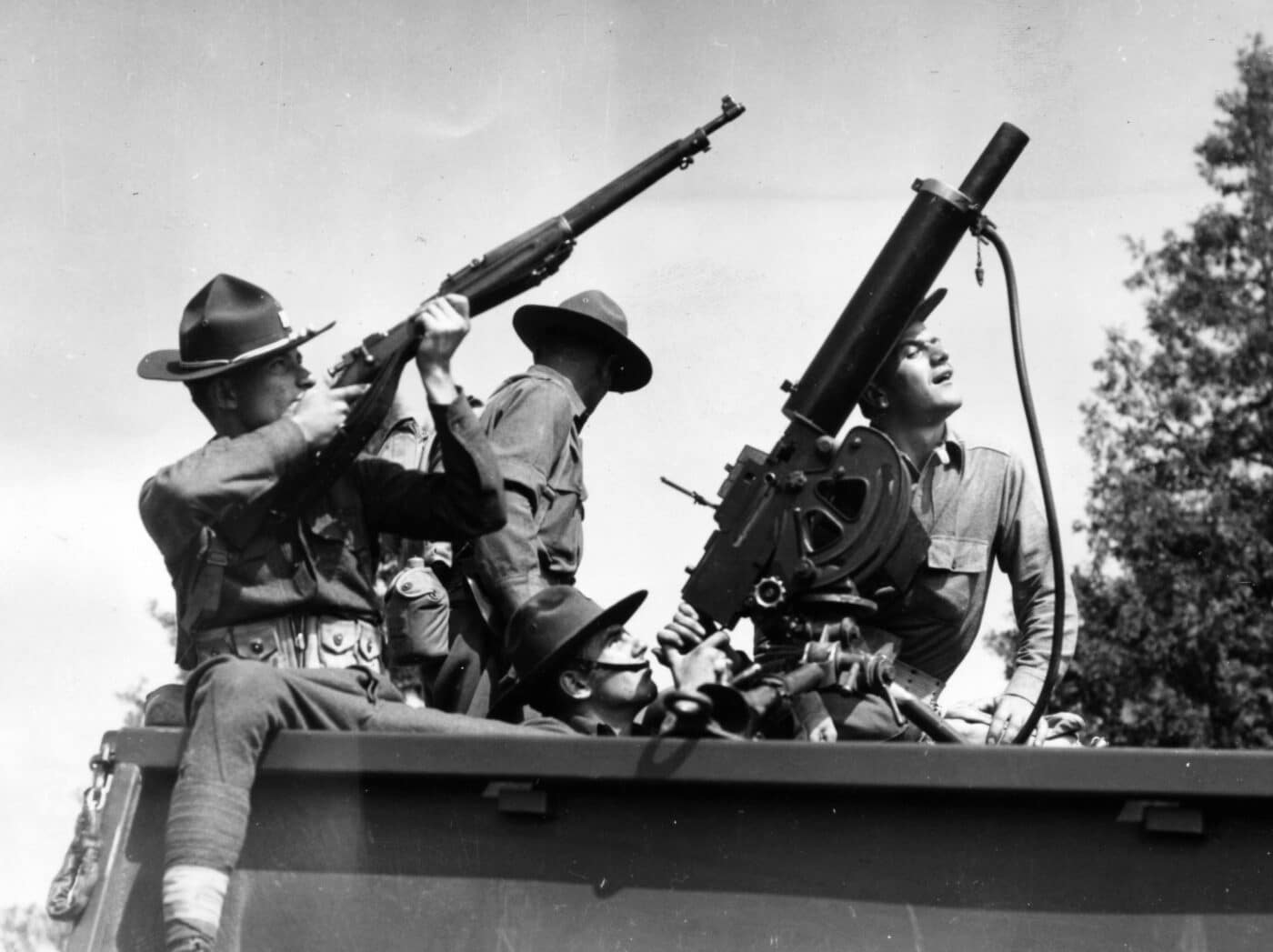
President Roosevelt announced the “Lend-Lease Act” on March 11, 1941, and as American warships escorted Allied convoys in the Western Atlantic and U.S. troops occupied Iceland, America looked less and less like a neutral nation. Even so, more than 70% of Americans favored staying out of the war. Isolationism was the watchword of the era, and for most folks, it was yet another “European problem” that they wanted no part of.
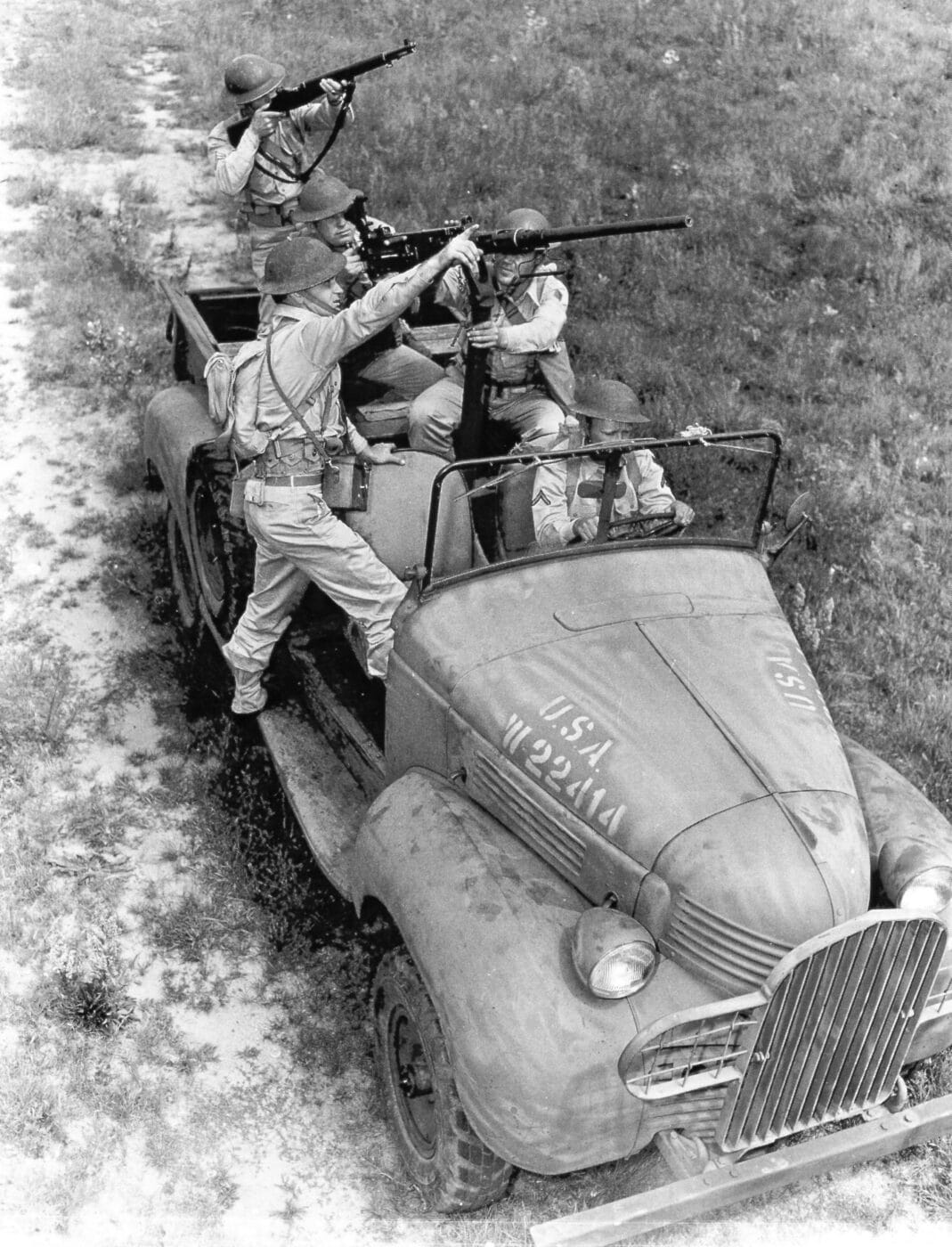
Charles Lindbergh, one of America’s greatest heroes of that time, described isolationism in this way:
An independent American destiny means, on the one hand, that our soldiers will not have to fight everybody in the world who prefers some other system of life to ours. On the other hand, it means that we will fight anybody and everybody who attempts to interfere with our hemisphere.
“An Independent Destiny for America,” Charles Lindbergh
Planning for the Worst
That was the backdrop for America’s extensive war games, conducted in Louisiana during August and September of 1941. On June 17, 1941, the U.S. Army was expanded to 280,000 men. Just nine days later it was expanded to 375,000 men. Despite these additions, America’s ground and air forces were quite small compared to European armies. Meanwhile, very few in the United States were giving any credence to the growing threat from Imperial Japan.
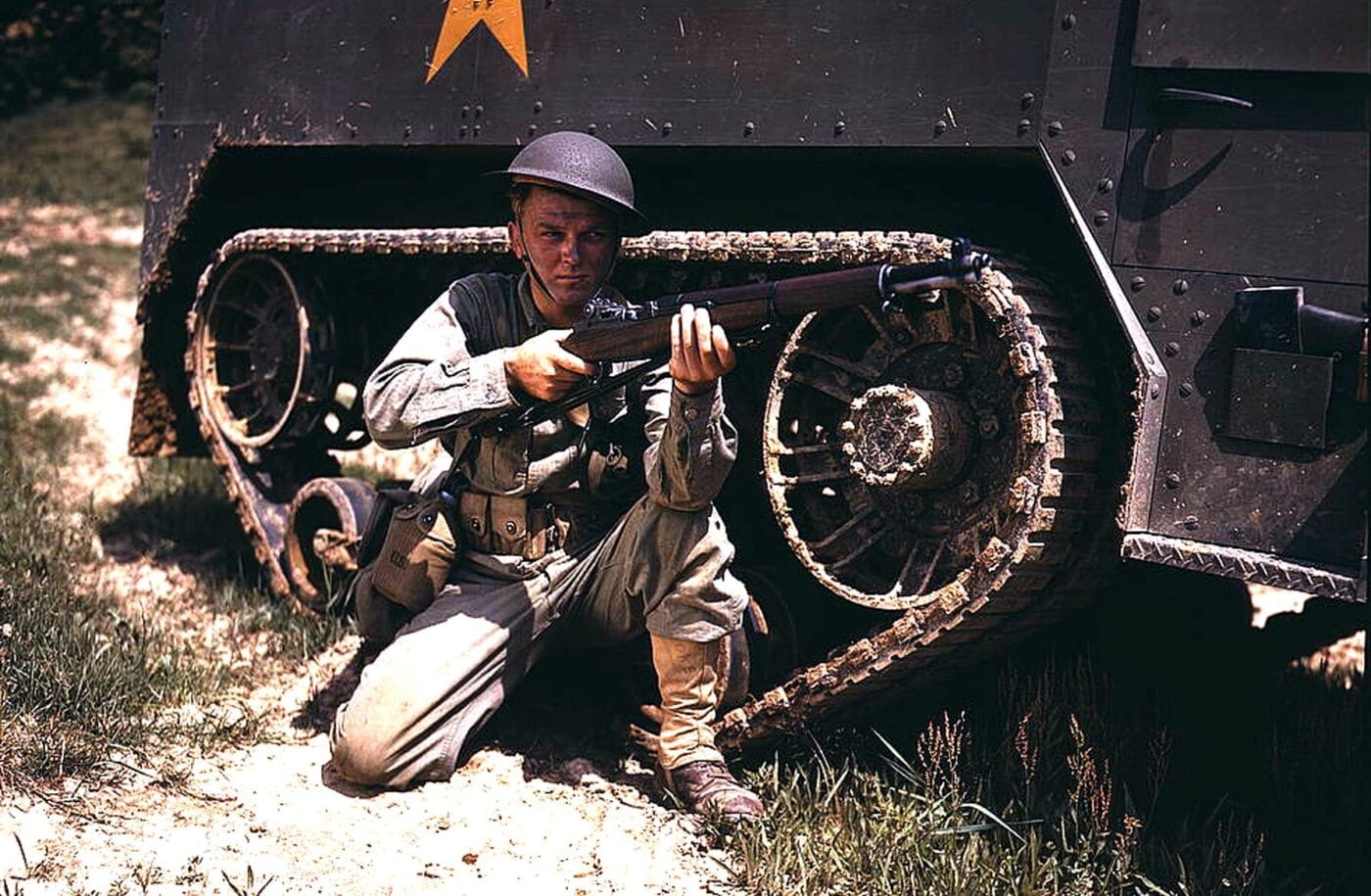
With an eye to the massive combined-arms battles going on in Russia and in North Africa, the “Louisiana Maneuvers” were a series of major U.S. Army field exercises and were the largest ever held by U.S. forces to that date. They would grow to involve nearly 400,000 troops operating in central and northern Louisiana, including Fort Polk, Camp Claiborne and Camp Livingston.
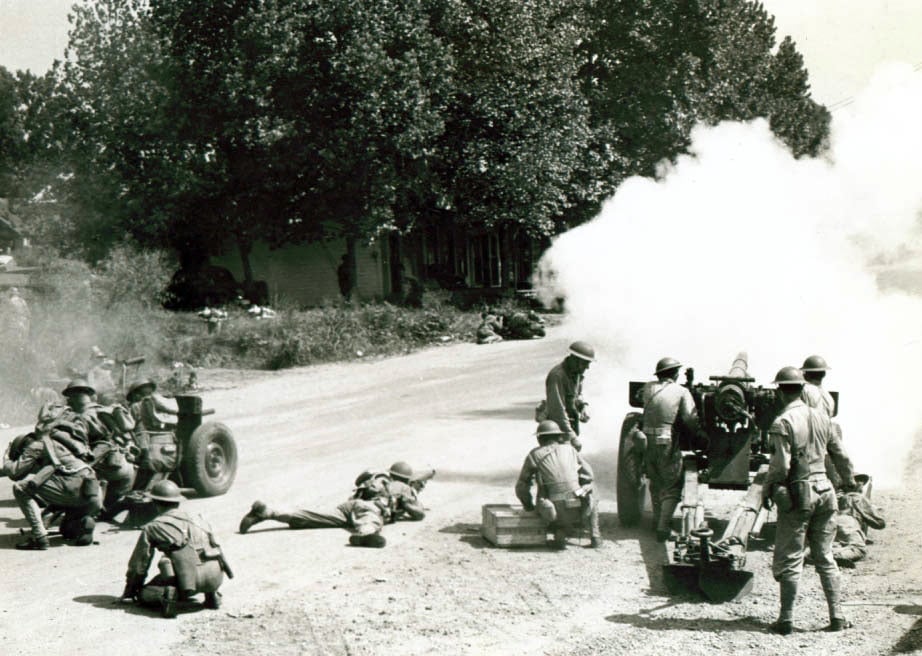
Two fictitious countries, represented by the Red and Blue armies (comprising a total of 19 divisions), were created for these war games:
The Red Army: Kotmik (Kansas, Oklahoma, Texas, Missouri, and Kentucky)
The Blue Army: Almat (Arkansas, Louisiana, Mississippi, Alabama, and Tennessee)
There were two phases of the operation, with the second phase concluding with the Blue Team (led by General Patton’s 2nd Armored Division) taking Shreveport. Cooperation and relationships with the confused residents of Louisiana varied throughout the maneuvers, but ultimately the locals, along with their farms and crops, survived.
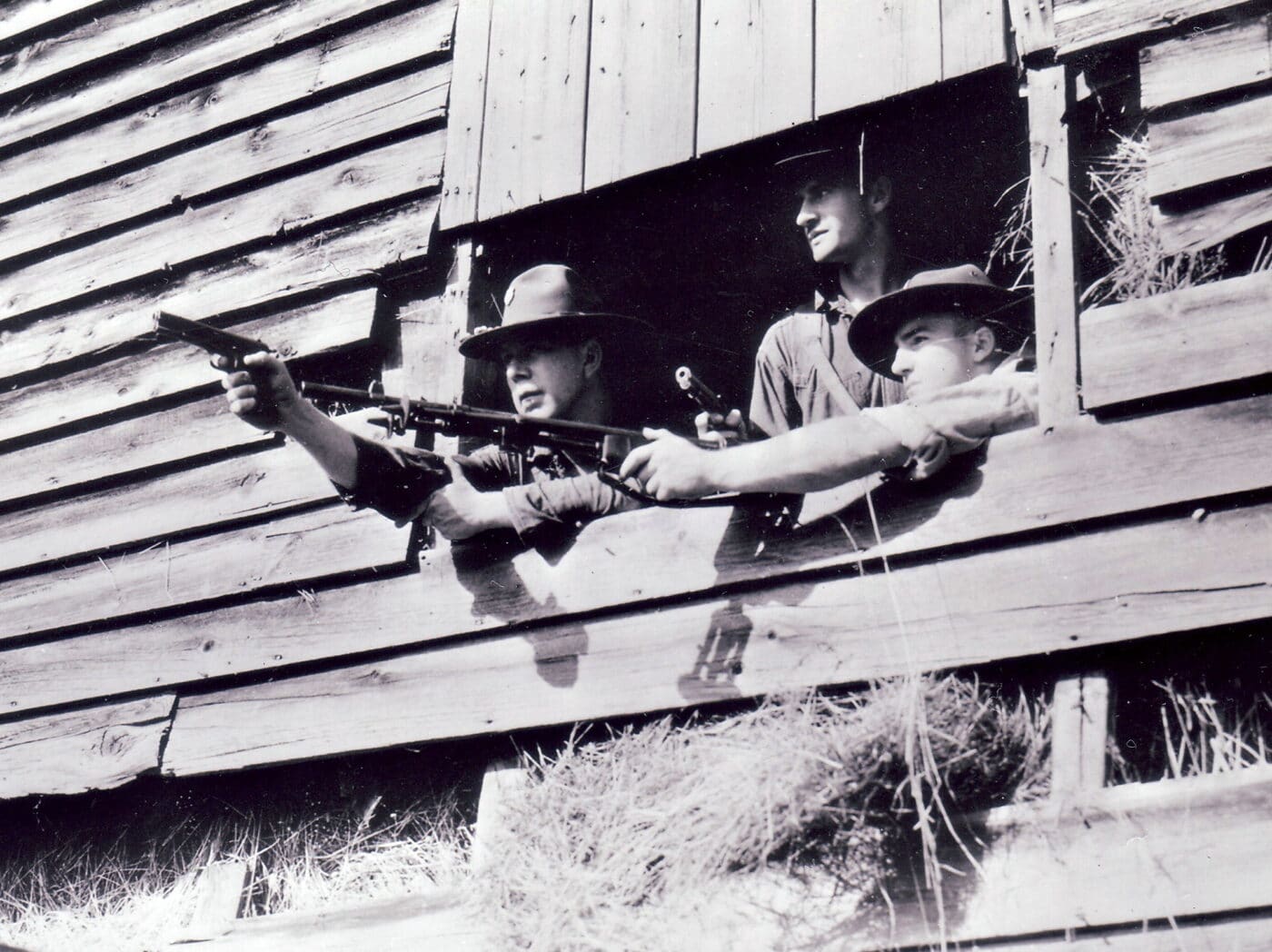
Some important lessons were learned, mainly about the operations of armored and mechanized forces. Much of the basis of what would become the American armored division structure in World War II was learned in Louisiana during the summer of 1941. Unfortunately, U.S. planners were satisfied with what would prove to be a substandard group of armored vehicles and anti-tank weapons.
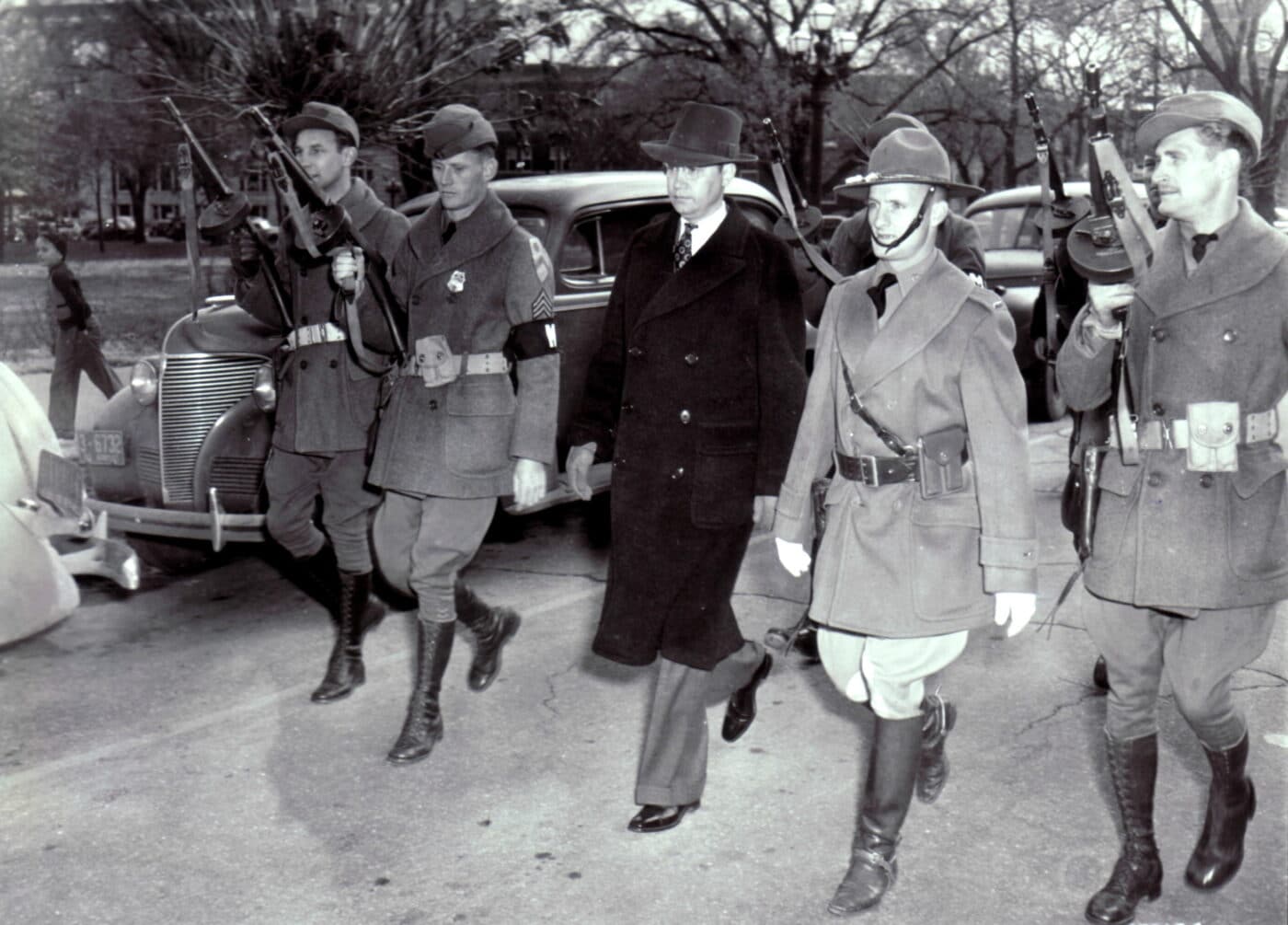
The M1 Combat Car and the M2 Light Tank were both obsolete by European standards. The M3 “Lee” just began production in August 1941, so it was not available for the war games. Meanwhile, U.S. anti-tank weapons, from the new 37mm M3 AT gun (introduced in 1940) and the well-aged 75mm M1897A4 gun were good enough for the moment but were on the verge of being obsolete as well.
The basics of the new U.S. tank destroyer doctrine (towed AT guns at this point) were tested during the Louisiana War Games and, without a truly modern armored force to defend against, all seemed well. While the tank destroyer doctrine and its specialized vehicles were not a failure per se during World War II, it was never proven effective either and it was quietly dropped by the autumn of 1945.
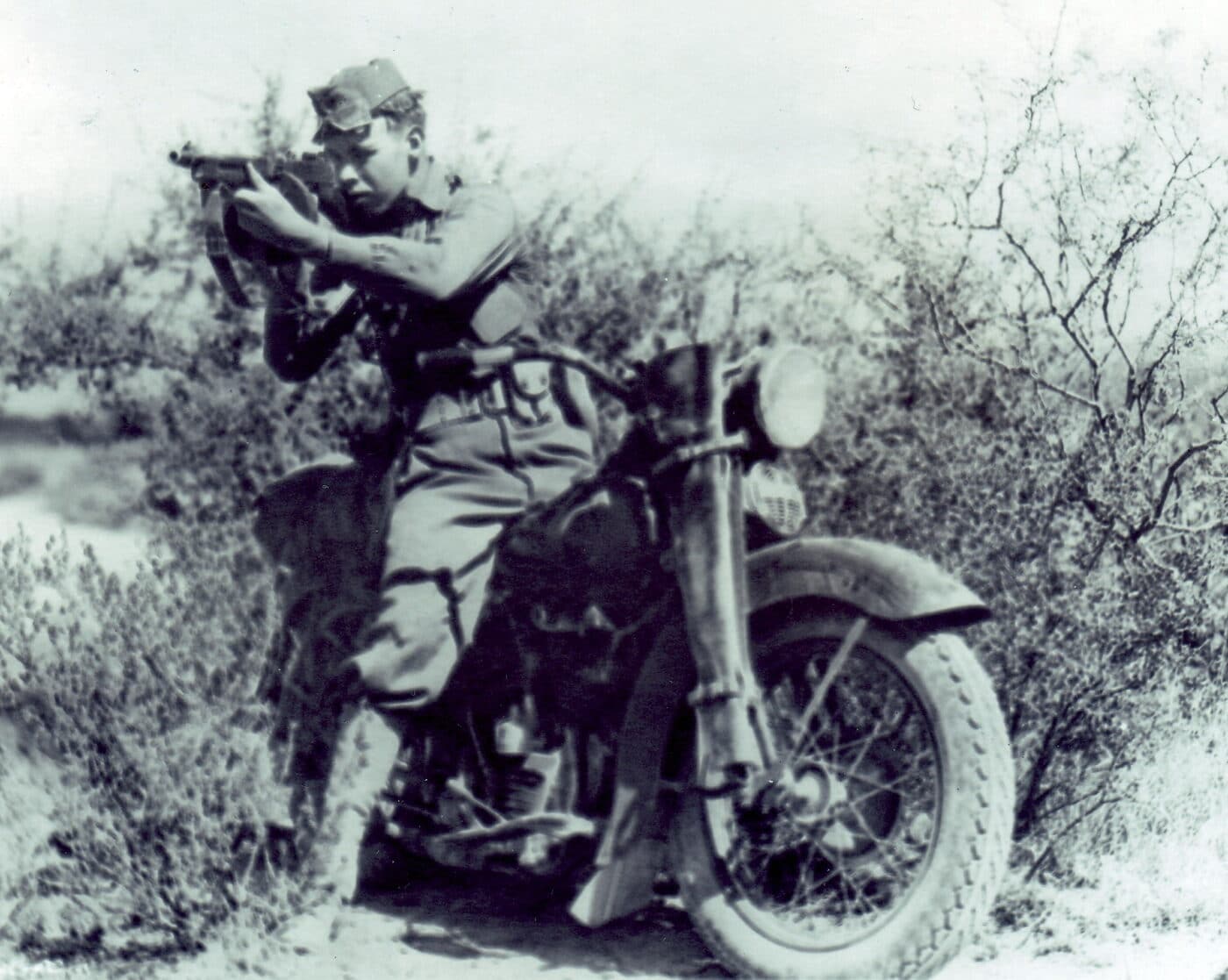
Even while the U.S. military lagged behind contemporary international powers in many ways, American firearms were specifically the envy of the world. Even though U.S. ground forces in 1941 were smaller by comparison, on a man-for-man basis American troops could wield unmatched firepower. Once war was thrust upon the United States, the Arsenal of Democracy would overwhelm the Axis with industrial muscle and engineering ingenuity.
M1911 Pistol
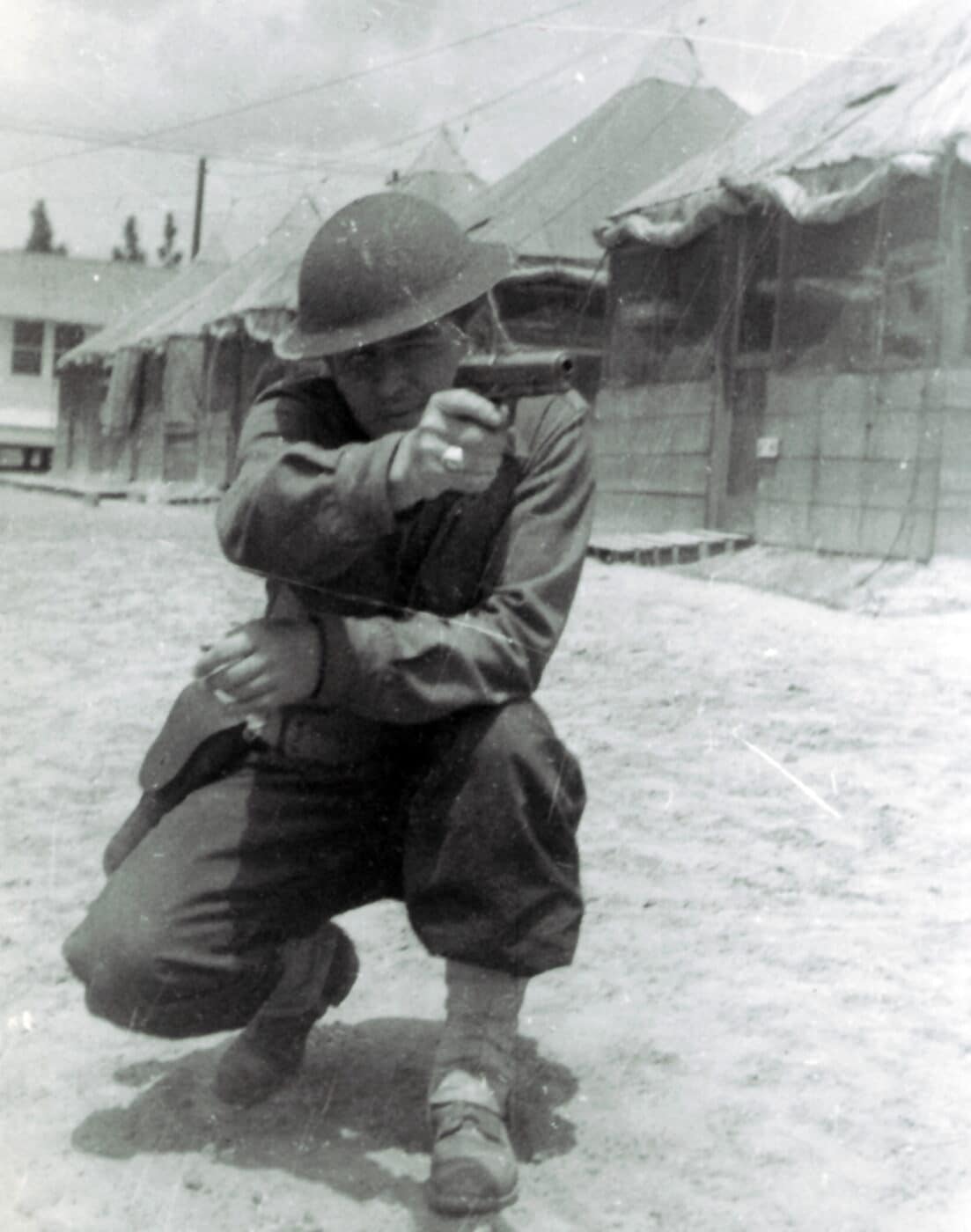
America’s big .45 caliber semi-auto handgun was blooded in World War I and earned the trust of troops across several generations. In 1941, and throughout World War II, there was no finer combat pistol than the M1911.
Thompson Submachine Gun
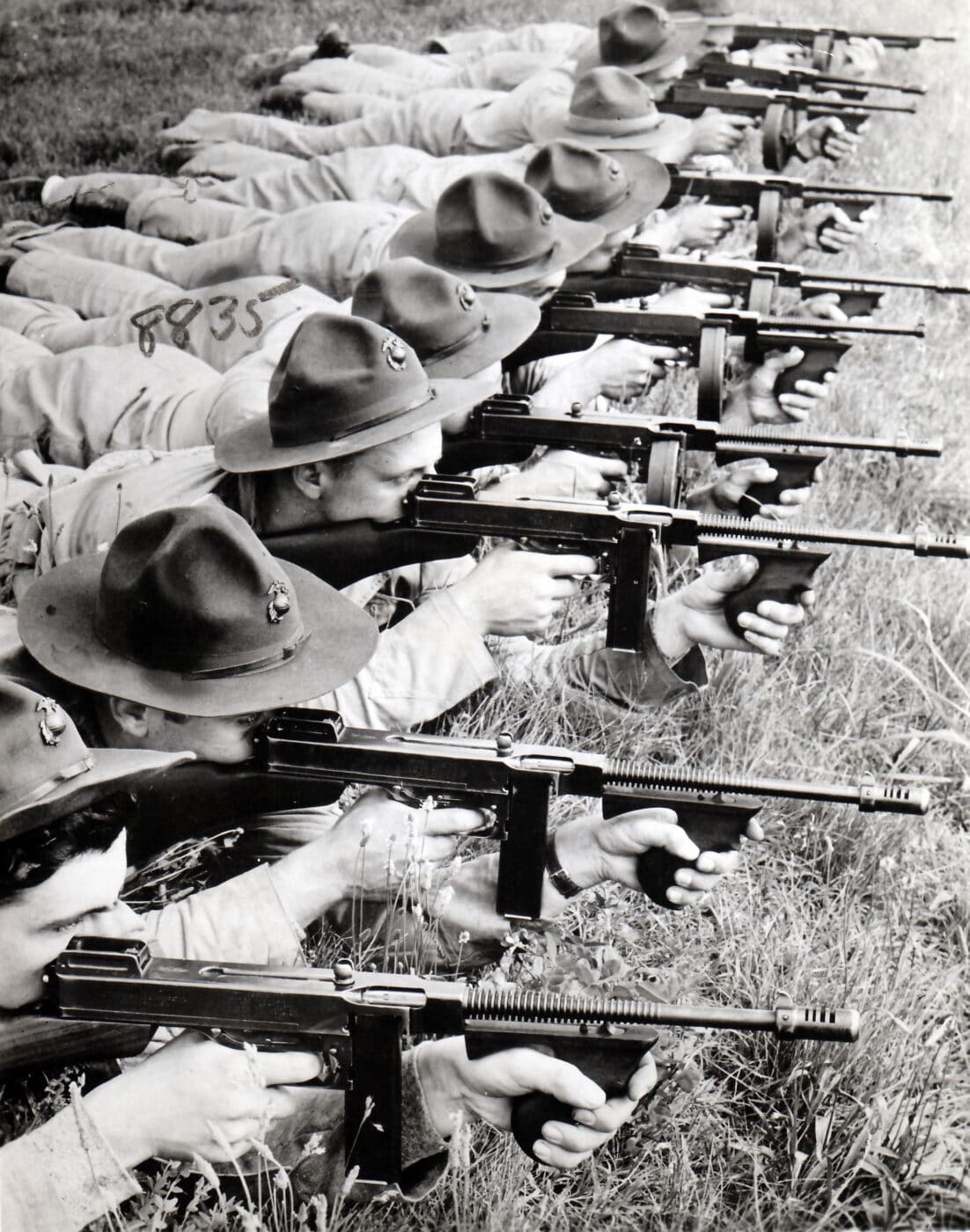
A sturdy first-generation submachine gun, the Thompson first won fame during the gangland wars of the 1920s-1930s. In the U.S. military, the USMC were early users, fielding the Thompson in combat in China and Nicaragua. The U.S. Army finally adopted the expensive-to-produce M1928 Thompson on a limited basis in 1939. Wartime models (the M1 and M1A1) were simplified to cut costs and production time. Whatever the version, the Tommy Gun hammered Axis troops around the globe with .45 caliber firepower.
M1903 Springfield Rifle
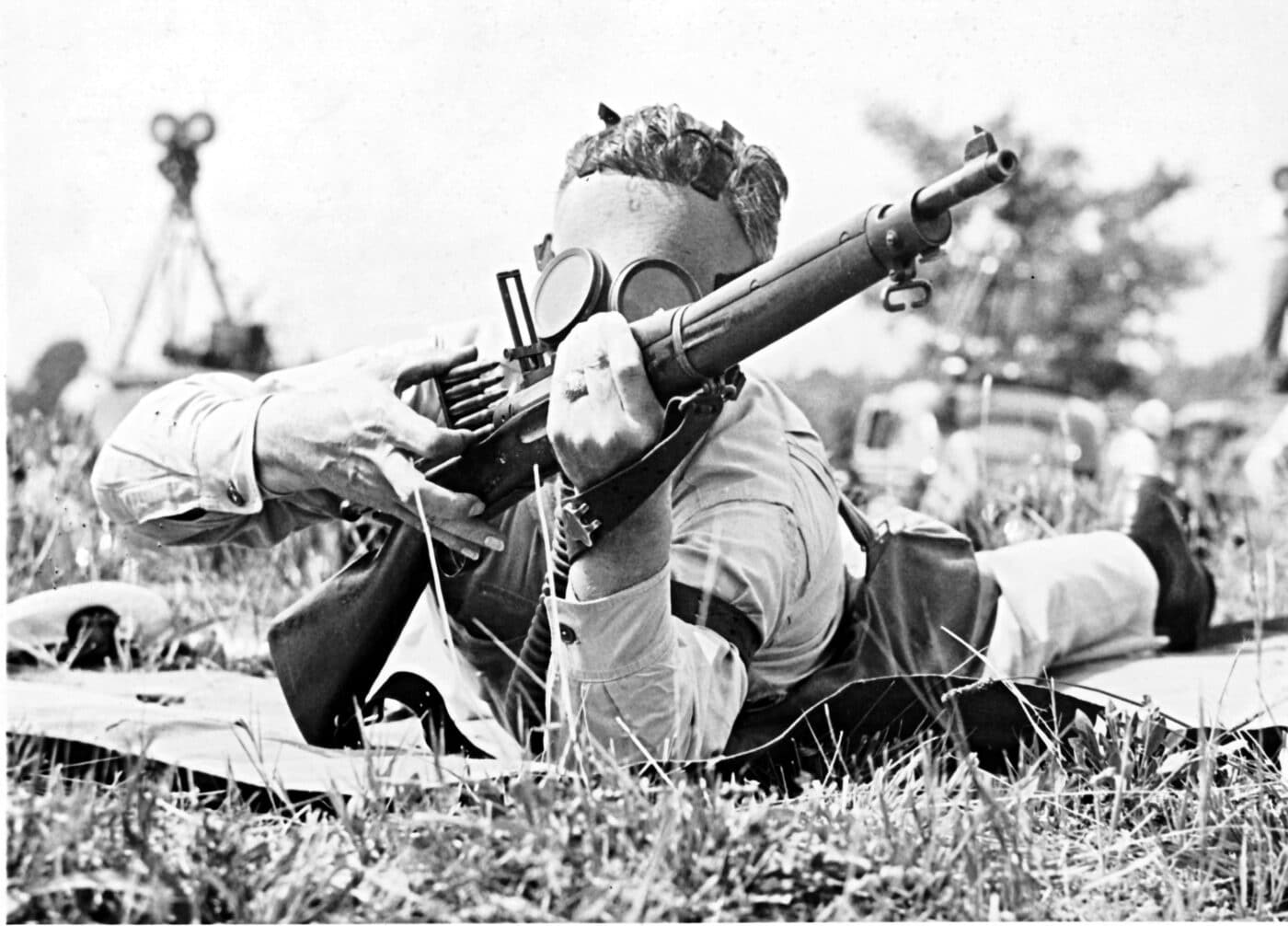
The Springfield was one of the greatest bolt-action rifles of all time and had already established itself as a battlefield legend long before America entered World War II. In 1941, despite the arrival of the semi-automatic M1 rifle, the M1903 remained the most prevalent battle rifle in U.S. service. The Springfield would continue to serve America through 1945, in primary and secondary roles, as a highly effective combat weapon.
M1 Garand Rifle
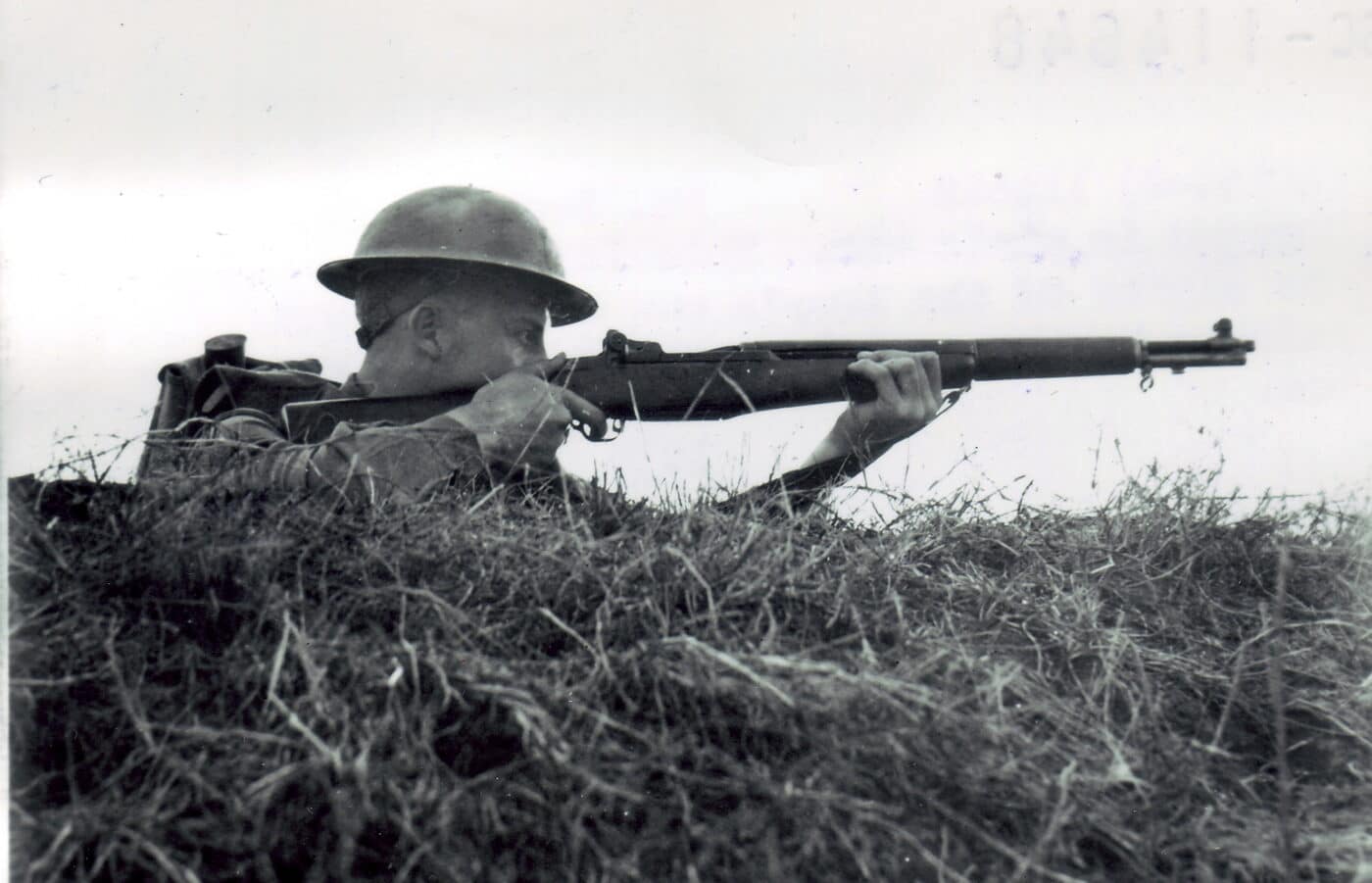
Even though American troops helped defeat Imperial Germany in 1918 in a large part due to the great abilities of the M1903 Springfield (and M1917 Enfield) rifles, U.S. Ordnance was not satisfied. Consequently, John Garand developed and refined his semi-automatic .30 caliber M1 rifle at Springfield Armory.
Officially adopted in 1936, production of the M1 rifle started slowly. By the time of the Pearl Harbor attacks, more and more units were equipped, at least partially, with the new semi-auto rifle. Japanese troops invading the Philippines beginning on December 8, 1941, would be the first to face the high volume of fire produced by M1 rifles. By the end of World War II, General Patton would describe John Garand’s masterpiece design as “the greatest battle implement ever devised.”
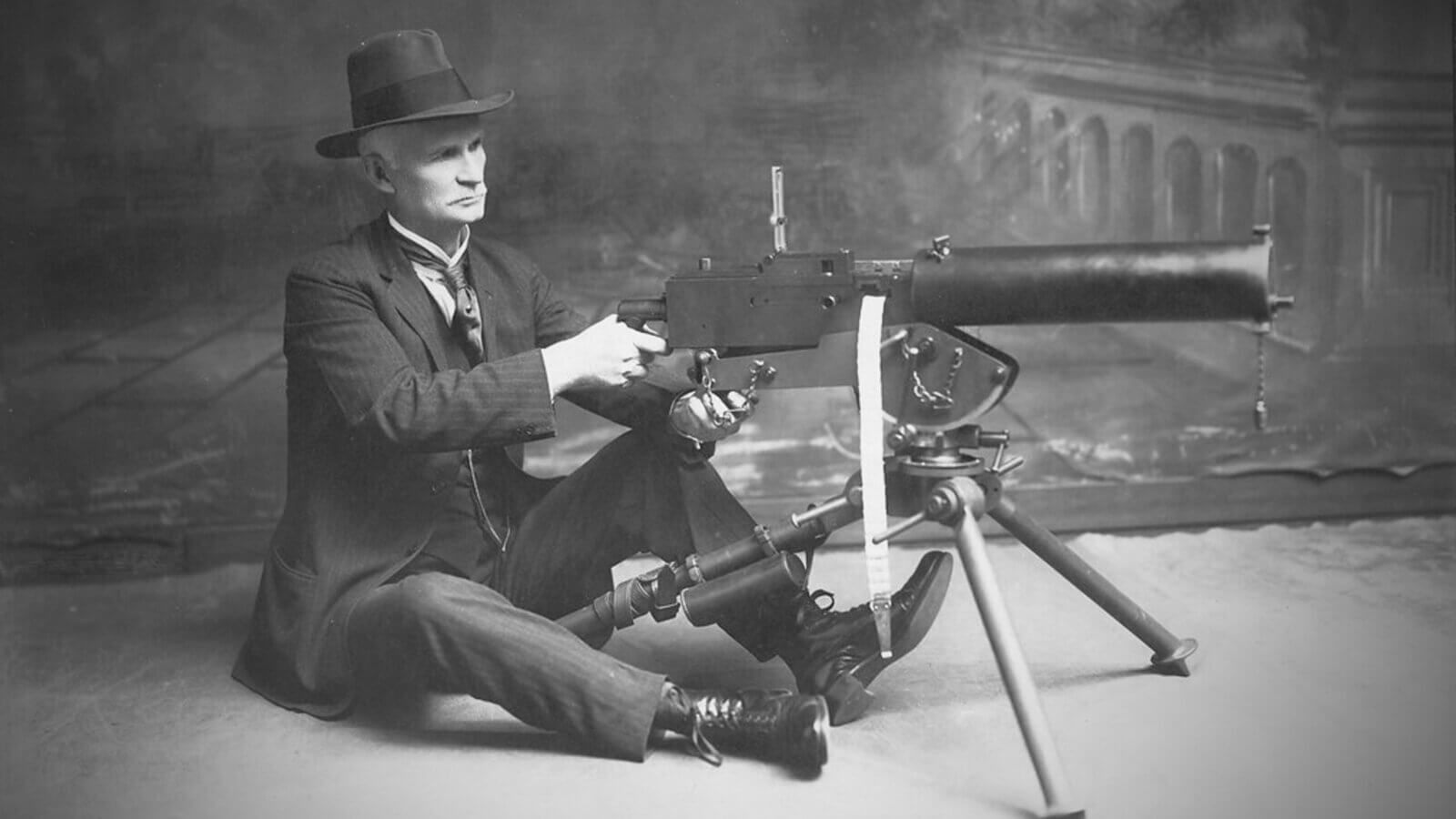
Browning Automatic Rifle
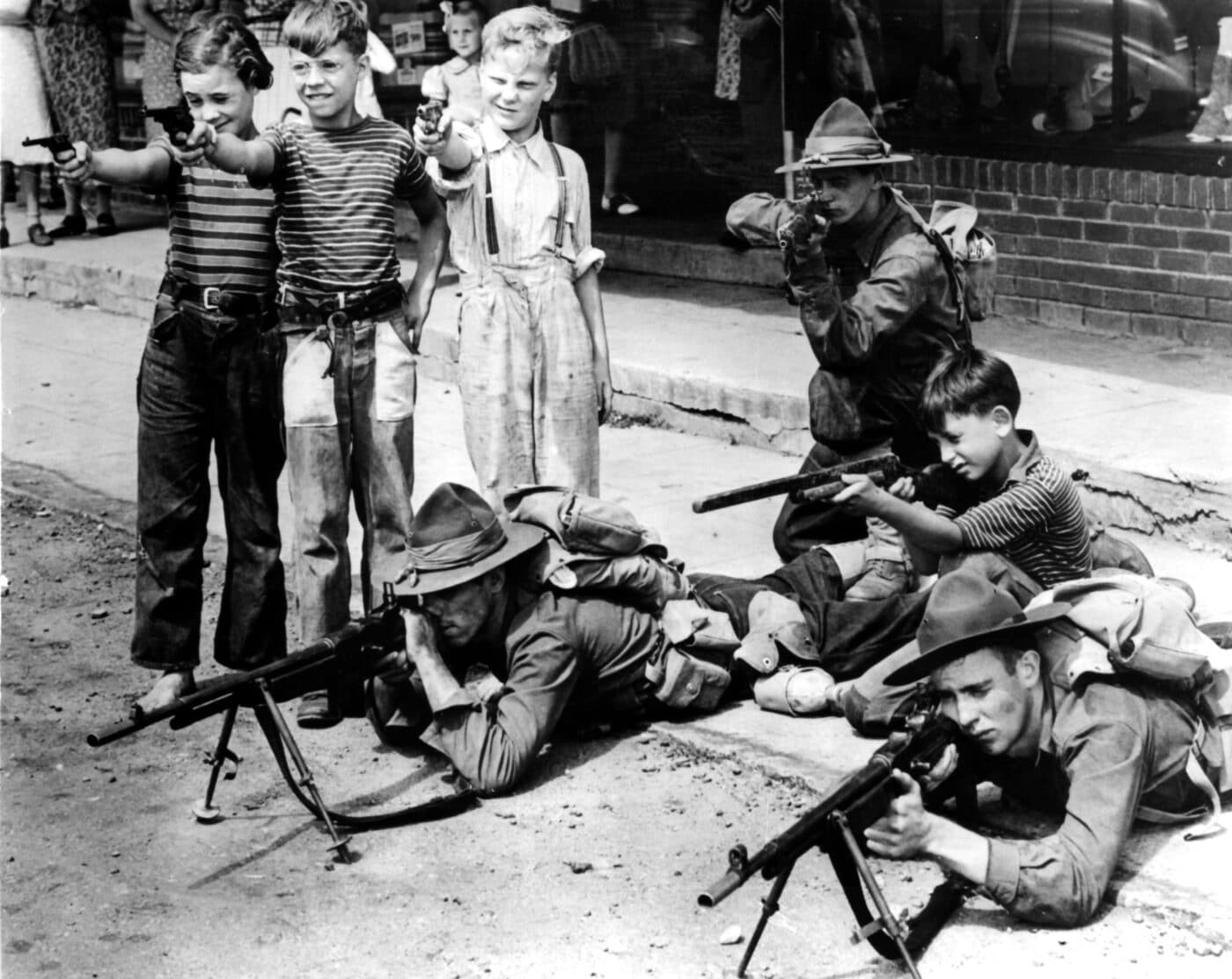
The BAR had seen a little combat at the end of World War I, and American troops were quickly aware that they had a potent base of firepower for infantry squads. The Marines put the BAR to good use during the interwar period during actions in China and Nicaragua. As the 1920s progressed the concept of the “light machine gun” became popular, and so the BAR received a bipod, carrying handle, and shoulder brace, but these were often discarded to save weight. World War II showed that the BAR was simply a full-sized .30 caliber automatic rifle and a devastatingly effective one at that.
Browning M1917 .30-caliber Machine Gun
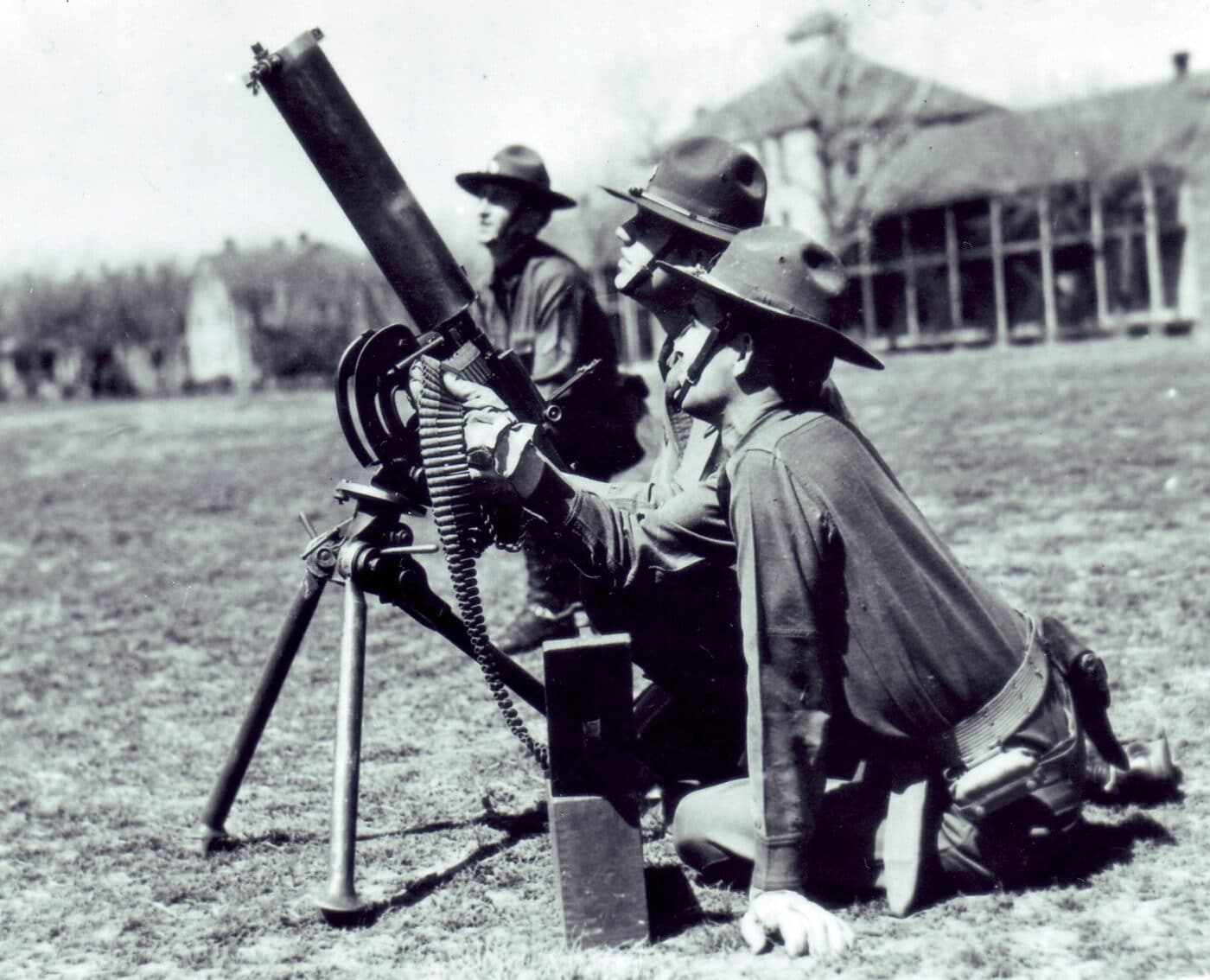
The water-cooled Browning M1917 debuted in 1918 and quickly established itself as one of the finest machine guns in the world. The M1917 was heavy (100+ pounds with the gun, tripod, and a full water jacket), but the Browning design was remarkably accurate, steady, and reliable. M1917 (and the updated M1917A1) served throughout WWII and the Korean War.
Browning M1919 .30-caliber Machine Gun
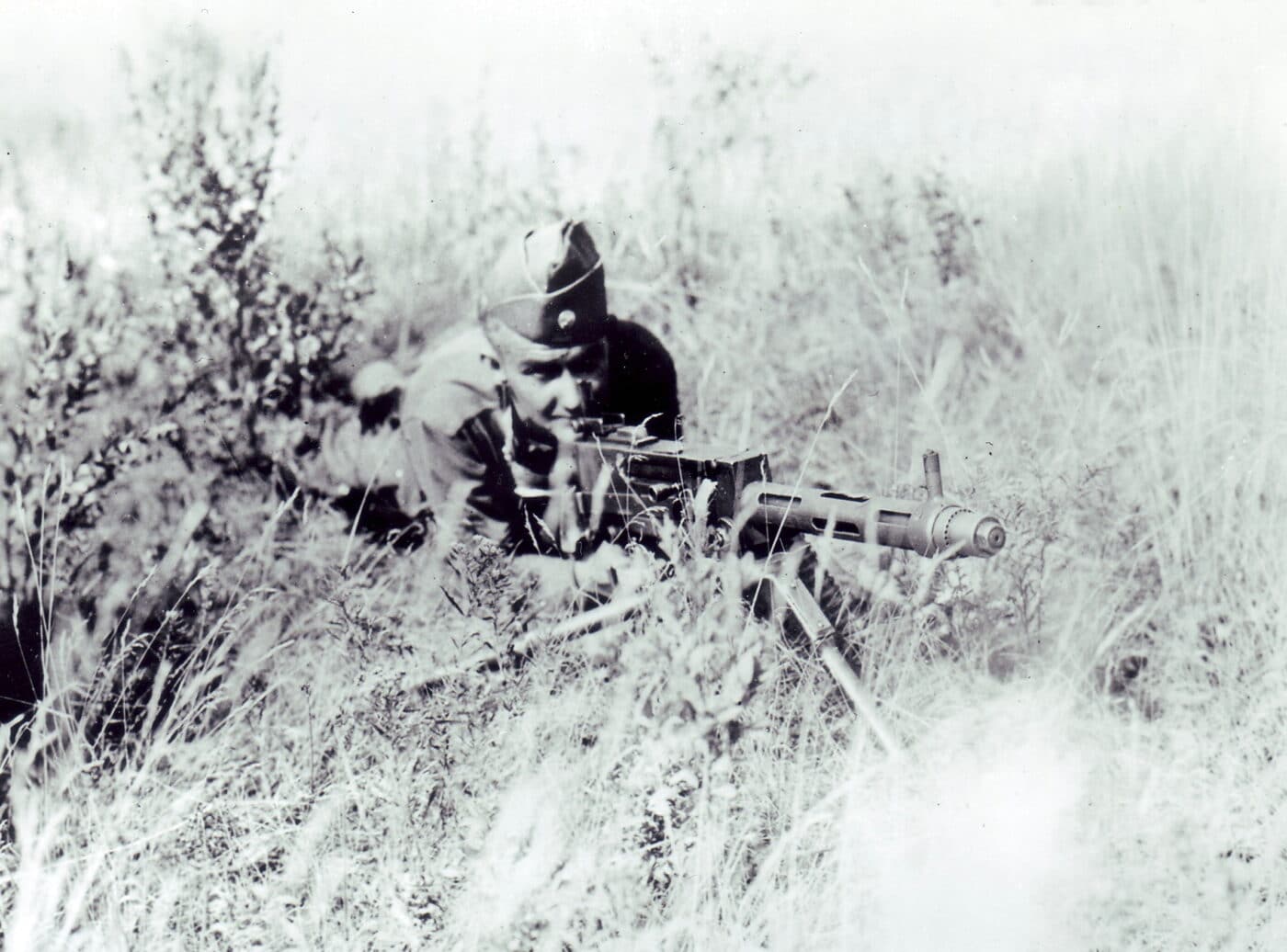
The air-cooled Browning M1919 started its career as a tank MG and was soon adopted by the U.S. Cavalry (as the M1919A2) to give more mobile firepower to dismounted troops. By the late 1930’s the prime model (the M1919A4) began to appear in fixed and flexible mounts in U.S. armored vehicles and with the infantry. The M1919 (31 pounds for the gun, 14 pounds for the M2 tripod) went on to serve during World War II in great numbers and continued in service through the Vietnam War. Browning’s air-cooled design was also used as an aircraft machine gun (the .30 caliber AN/M2).
Browning M2 .50-caliber Machine Gun
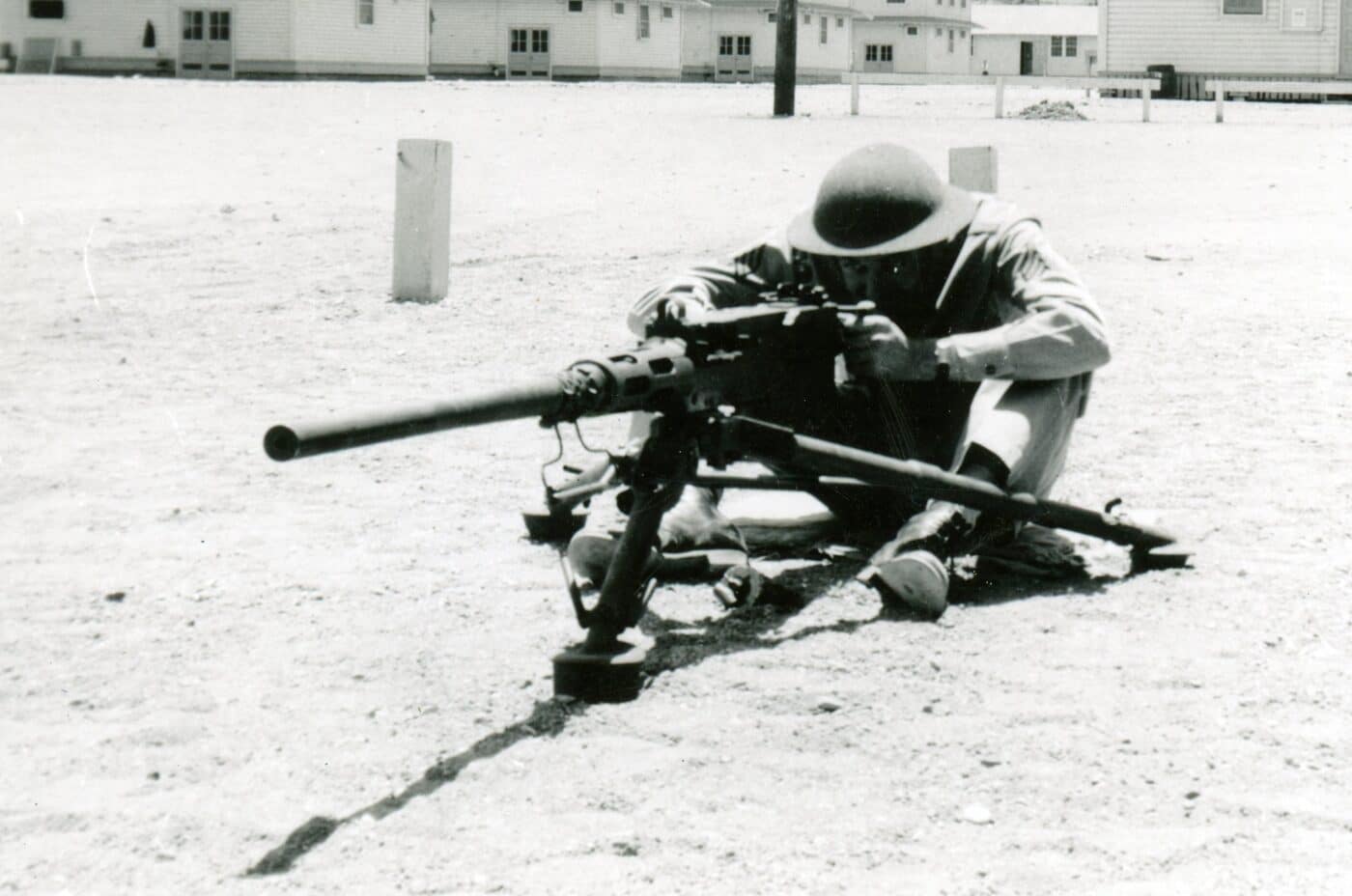
The Axis powers had no idea of the massive punch America had waiting for them. This came in the form of Browning’s .50 caliber heavy machine gun. Production of the big M2 MG (128 lbs. with gun and tripod) began in 1933, with early use focused on anti-tank and anti-aircraft roles. By 1941 the Browning M2s were rapidly growing in number, many of the powerful MGs mounted on armored vehicles. The standard Browning M2 also became the AN/M2 (Army/Navy) aircraft machine gun—equipping American fighters and bombers throughout World War II. Even now, the Browning M2 continues to serve American troops, dominating battlefields around the world.
The Calm Before the Storm
With America’s entry into World War II just a few months away, many lessons were yet to be learned. America would soon find what it was made of and discover the incredible bravery and ingenuity of its people. For the moment though, there was one last summer of peace for America during 1941, the war still seemed a world away. And when the attack upon Pearl Harbor happened on that Day of Infamy, Dec. 7th, 1941, these small arms would be pressed into service that very day and for the years of conflict that would follow to bring the Axis powers to their knees.
Editor’s Note: Please be sure to check out The Armory Life Forum, where you can comment about our daily articles, as well as just talk guns and gear. Click the “Go To Forum Thread” link below to jump in and discuss this article and much more!
Join the Discussion
Continue Reading
Did you enjoy this article?

 229
229





